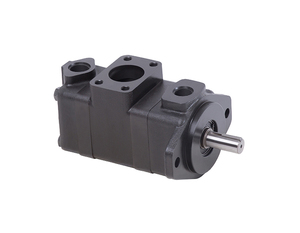-
 Find in Members
Find in Members Find in Videos
Find in Videos Find in Channels
Find in Channels
This website uses cookies to ensure you get the best experience on our website.
To learn more about our privacy policy Click herePrivacy Preference
- Tags - #Hydraulic pump
-
- Last updated July 27, 2019 0 comments, 601 views, 0 likes
- Taizhou, 浙江省中国 - Get Directions
More from hong yi
More in Politics
Related Blogs
Working Principle and Maintenance of Hydraulic Pump
Body
1. Working principle of hydraulic pump
Hydraulic pump is an important device of hydraulic system. It relies on the reciprocating motion of the plunger in the cylinder body to change the volume of the sealed working chamber to realize oil absorption and pressure. Hydraulic pumps have the advantages of high rated pressure, compact structure, high efficiency and convenient flow adjustment, etc. They are widely used in occasions where high pressure, large flow and flow need to be adjusted, such as hydraulic machines, construction machinery and ships.
Hydraulic pump is a kind of reciprocating pump, which belongs to volume pump. Its plunger is driven by eccentric rotation of pump shaft to reciprocate. Its suction and discharge valves are check valves. When the plunger is pulled out, the pressure in the working chamber is reduced, the outlet valve is closed, and when the pressure is lower than the inlet pressure, the inlet valve is opened and liquid enters; When the plunger is pushed in, the working chamber pressure rises, the inlet valve closes, and when the pressure is higher than the outlet pressure, the outlet valve opens and liquid is discharged.
When the transmission shaft drives the cylinder body to rotate, the swash plate pulls or pushes the plunger back from the cylinder body to complete the oil suction and discharge process. The oil in the working chamber formed by the plunger and the cylinder bore is respectively communicated with the oil suction chamber and the oil discharge chamber of the pump through the oil distribution plate. The variable mechanism is used to change the inclination angle of the swash plate, and the displacement of the pump can be changed by adjusting the inclination angle of the swash plate.
2. Structure of hydraulic pump
Hydraulic pumps are divided into axial hydraulic pumps and radial hydraulic pumps. As radial hydraulic pump is a new type of high-efficiency pump with relatively high technical content, with the continuous acceleration, radial hydraulic pump will inevitably become an important component in the application field of hydraulic pump.
3. Maintenance of hydraulic pump
The swash plate type axial hydraulic pump generally adopts the form of cylinder body rotation and end face flow distribution. The end face of the cylinder body is inlaid with a friction pair consisting of a bimetallic plate and a steel oil distribution plate, and most of them adopt a plane flow distribution method, so the maintenance is relatively convenient.
For more information, please click here: https://www.vanepumpfactory.com/
Photos
Map
-
Locations on MyWorldGo
Location Information
- Location: Taizhou, 浙江省中国 - Get Directions
- Formatted Address: 中国浙江省台州市
- Street Address: 台州市
- State: 浙江省
- Country: 中国










Comments